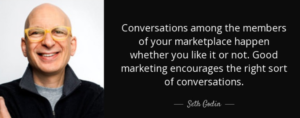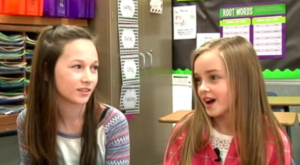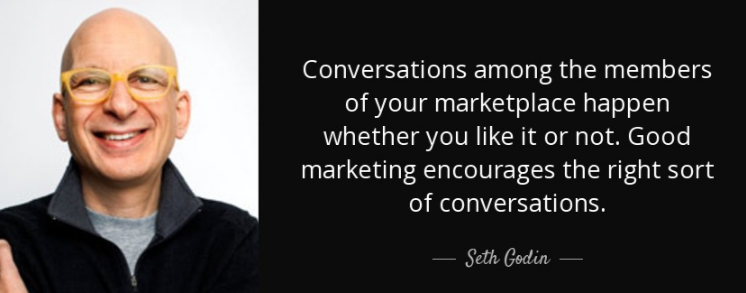Do you have a list of your favorite marketing influencers? We certainly do, and Seth Godin leads the list. A while back we posted a blog entitled Stimulate Thinking and Learning by Selecting the Best Mentors. Seth Godin strategic marketing lessons learned to make him a favorite author of mine.
As the article describes, he is also a silent mentor. He mentors through his writings and presentations.

Marketing lessons learned.
Yes … he does stimulate a lot of thinking and learning, but he also has a great knack for entertaining while he teaches.
I am obviously a big fan. He is a great entrepreneur, author, and public speaker. He is also a brilliant marketer. Over the years I’ve read many of Seth’s 11 books, listened to his interviews and have even watched several of his presentations on Ted.
Before we continue, let me ask you a question.
What works best for marketing strategy design in your business? We would love to hear what it was. Would you do us a favor and post it in the comments section? Be the one who starts a conversation.
With the advent of the Internet, the number of marketing options available to both budding and experienced entrepreneurs has become staggering.
Ten years ago, social media was in its infancy. Nobody even heard of mobile marketing, content marketing or big data. The iPhone hadn’t even been launched yet. If you took a reasonably competent marketer from 2007 and transported her to today, much of what she knew about her job would be irrelevant.
We’re at a similar point now. Many of the most powerful technologies that will shape marketing over the next ten years are just emerging and many marketers will be left behind. Clearly, anybody who thinks that they can get by doing more of what they’re doing today is kidding themselves.
Unfortunately, there’s no way to perfectly predict the future, but we can look at today’s technology and make some basic judgments. Big data and artificial intelligence will become much more powerful and interact more completely with the physical world. That, in turn, will transform how we identify and serve customers to something very different from today.
Related post: How to Get Small Business Press Coverage
So in today’s blog we will share and discuss our favorite eleven marketing lessons from him:

Strategic marketing … marketplace conversations
Conversations among the members of your marketplace happen whether you like it or not.
Good marketing encourages the right sort of conversations, the ones that create the basis for your word of mouth marketing.
Here is an example we always come back to:
Fleur, a florist shop in Chicago, puts a bucket full of bright balloons by the door of their shop both inside and out, with a handwritten sign that says: “Take a balloon.” That’s all.
No logos, no catch. It is just a small action to make people smile. Inside the store, it makes a pretty display, and outside the store, people are likely to ask where you got the balloon.
That’s a simple, fun way to get a conversation started without a marketing message. A bucket full of balloons is a bucket full of the word of mouth memories waiting to happen.
It doesn’t have to be branded or a part of a larger campaign — in fact, the simpler you make it, the better.
Marketing lessons learned … remarkable products
Remarkable products and services get discussed more often.
Marketing starts with having products and services that are better than the competition, making them remarkable and worthy of being discussed by your customers.
Keeping promises
Making promises and keeping them … is a great way to build a brand. This is one of our ‘first and foremost’ branding lessons.
Emphasis on making as well as keeping is required.
Strategic marketing examples … your best customers
Your best customers are worth … far more than your average customers. It starts with knowing who your customers are, then knowing the best of the group.
Marketing expense
You’re viewing marketing as an expense especially if you are marketing from a fairly static annual budget. Good marketers realize that marketing is an investment.
Stories and storytelling
Good marketers’ best way of conveying their messages is by telling stories.
Here is one of the best video examples we could find:
Have you seen the remarkable branding video design from this South African business? The Bell’s TV commercial features a father whose intrepid spirit demonstrates just what it takes to be a true man of character.
The video was created to market and build the brand. It is a very simple story. It advocates learning to read no matter your age or status in society. To us, it creates pure magic with the story, the visuals, the music and the emotion. It certainly finds emotional triggers
If you haven’t seen it, watch it now, it is only 2 minutes, and it will inspire you. It is certainly easily in our top 5 of all time.
Targeting customers
Always choose your customers and fire the ones that hurt your ability to deliver the right story to the others.
Customer needs
Customers don’t buy what they need … they buy what they want. Gather as many insights as possible by observing what they do. Asking them is not as valuable as observing them.
When a campaign says, the thing people want or need to hear, magic happens. Here is a fantastic example:
In 2013, H&R Block, with their agency Fallon, responded to something they heard while interviewing consumers. The thing people seemed to care about most was getting taxes done right and getting every dime they are owed back.
The creative bomb that went off birthed the now famous, “Get Your Billions Back America” campaign, which launched at the start of 2014.
It was a message consumers heard, understood and were instantly drawn to.
The genius of the campaign lies in what isn’t stated. There’s no reference to Block’s size and some locations. No mention of total refunds they’ve secured for their customers. No detail about their processes, services, prices or proficiency of their accountants.
No noise, interference or distractions.
Sure, these things matter. But every accounting firm markets around the obvious things that make them great. Block took an alternative route and marketed around what people want.

Spreading messages
New ways of spreading your messages and ideas … (blogs, permission-based RSS information, consumer fan clubs) are quickly proving how well they work.
Traditional ways of interrupting consumers (TV ads, trade show booths, junk mail) are losing their cost-effectiveness.
Here is an example to illustrate:
At Catbird Creamery in Maine, when you order a conventional flavor, they’ll insist that you sample something a little more adventurous. And even if you’re going to order vanilla, they want you to at least try the strawberry balsamic or green tea ginger.
Catbird knows that anyone can make a good vanilla, but what makes them stand out is helping their customers see all of the other fantastic flavors they also make.
They’re giving their customers an experience about which to talk. Even if the customer doesn’t order the hot pepper flavor they just sampled, they will likely tell others they tried it.
Reminding the consumer
Reminding the consumer of a story they know and trust is a powerful shortcut. The best customers and customer knowledge are based on the best relationships.
Disappointed customer
One disappointed customer is worth ten delighted ones. Avoid disappointed customers at all cost, by knowing and setting the right expectations.
The bottom line
